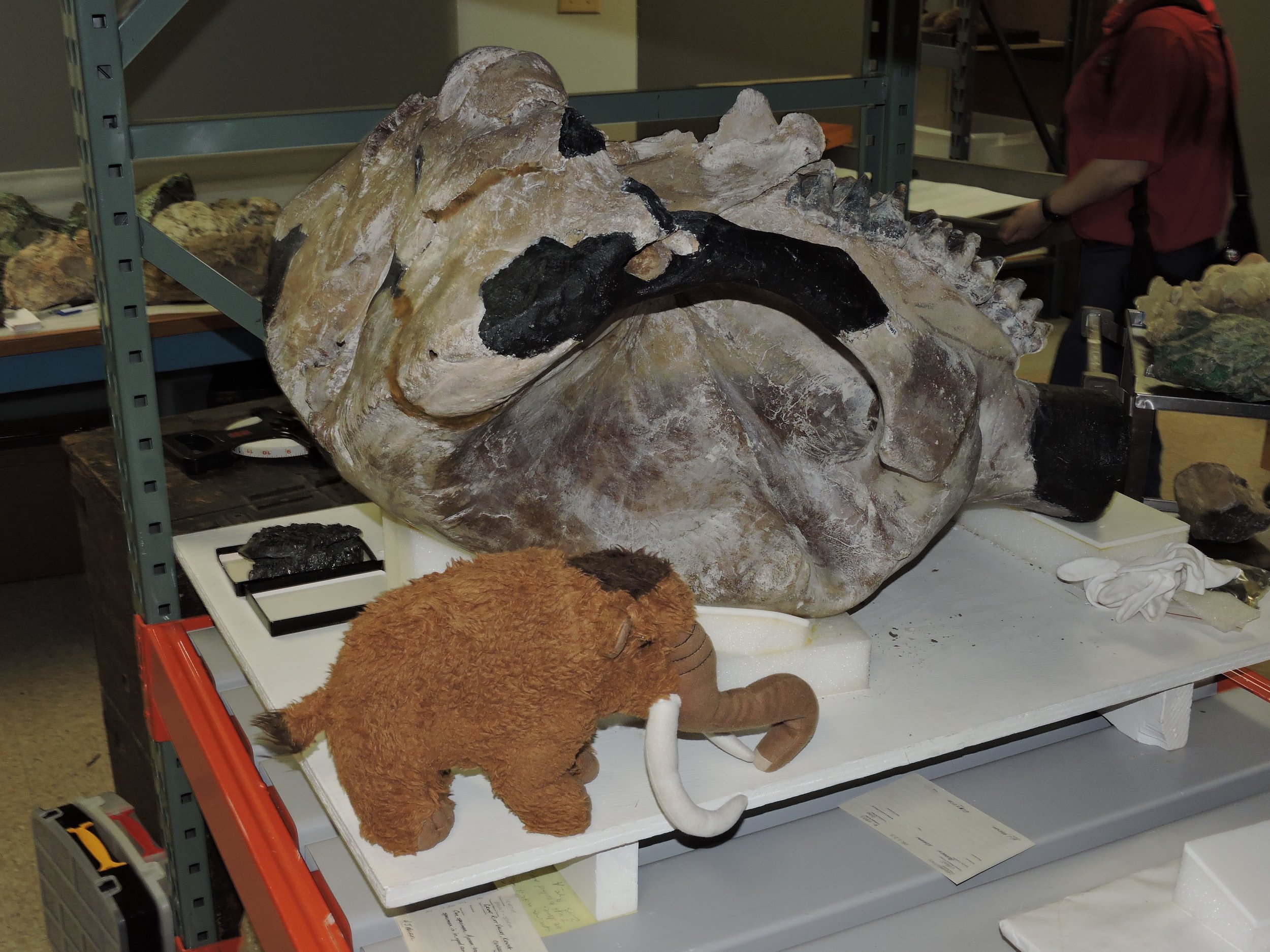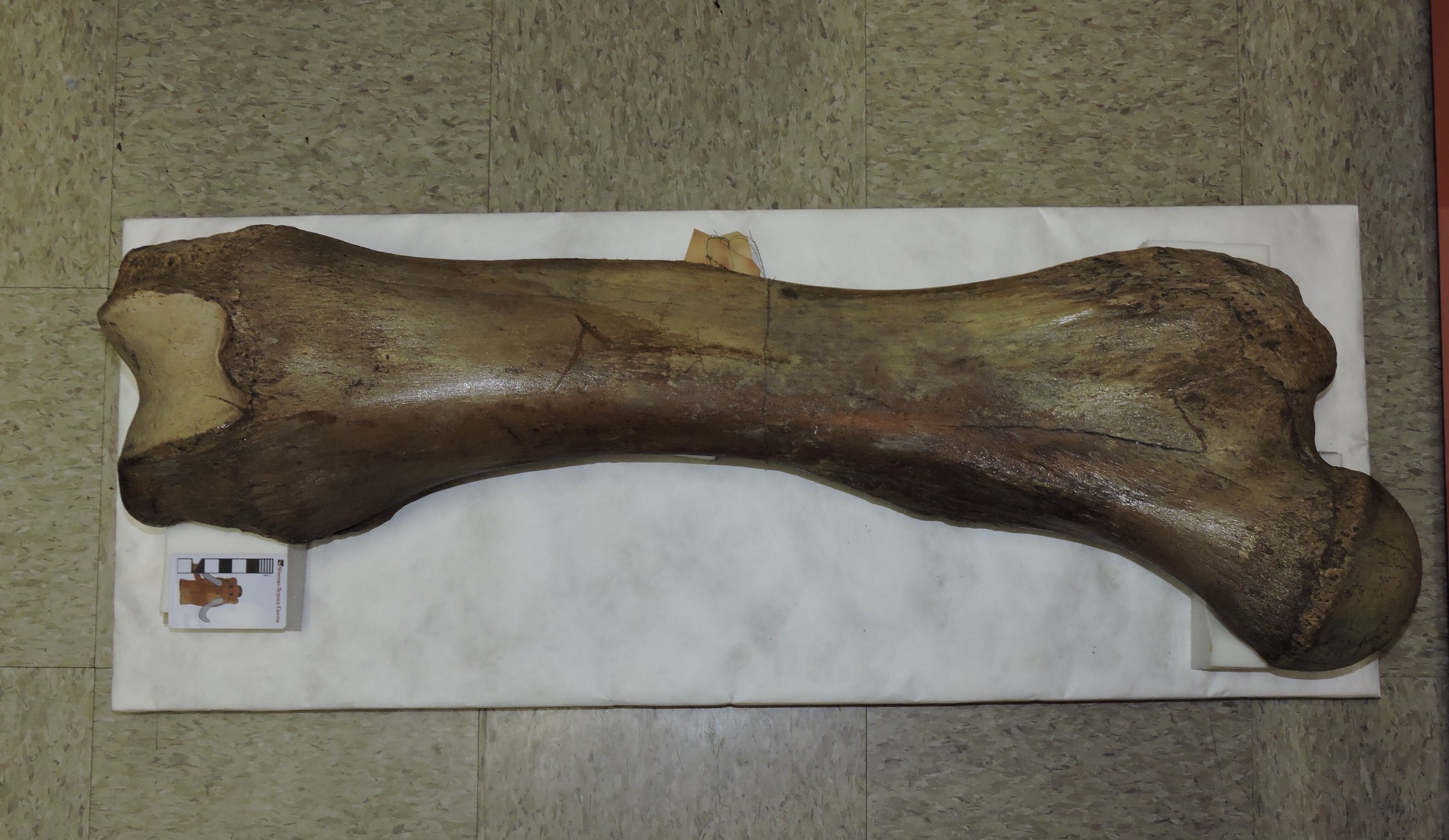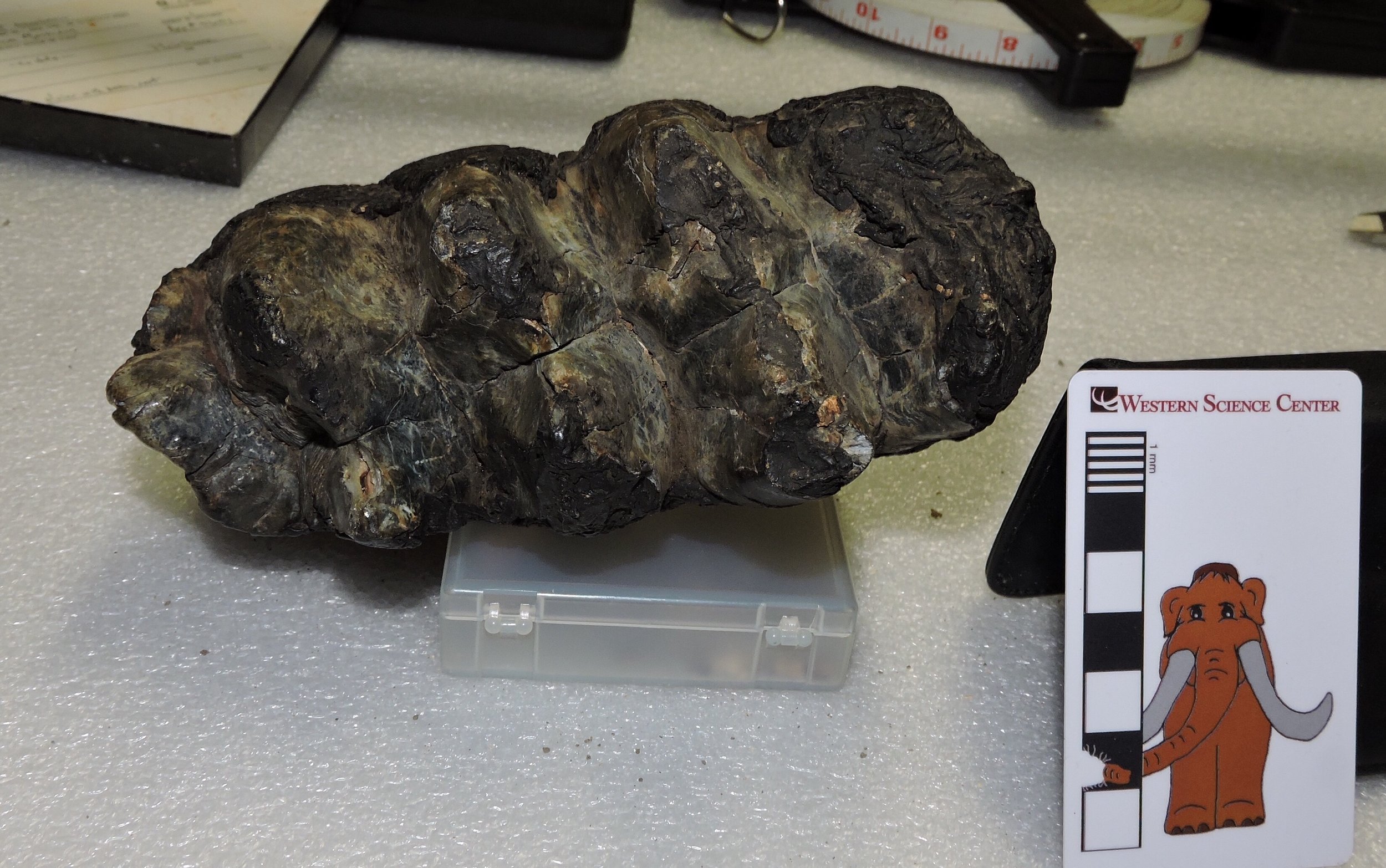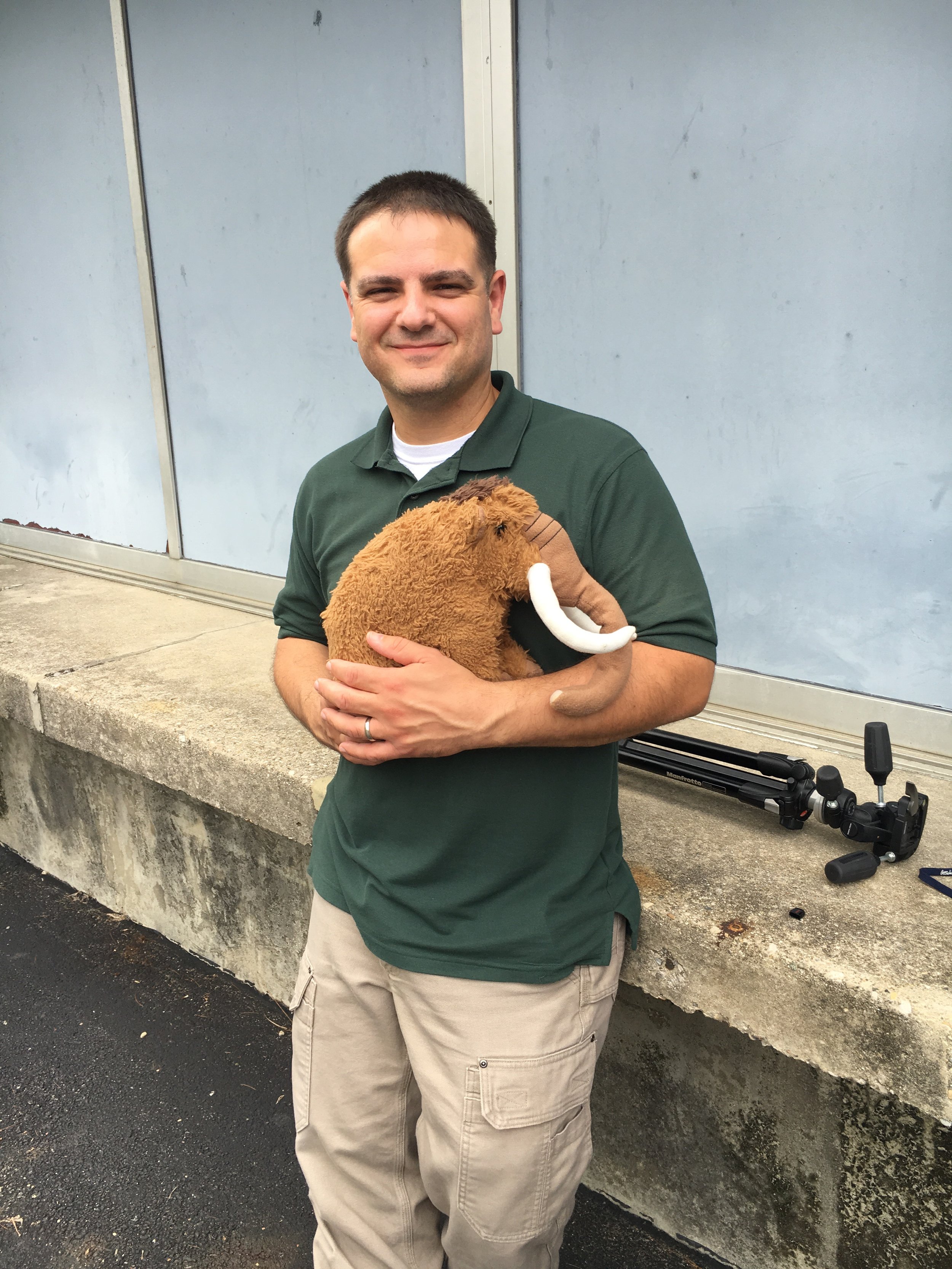 Brett, Max, and I headed back into Ohio this morning for our next stop on the "Mastodons of Unusual Size" tour; the Boonshoft Museum of Discovery in Dayton.The most impressive Boonshoft mastodon is a more-or-less complete skull, shown above with Max. This was a young adult animal, perhaps 16-20 years old based on tooth wear. The first and second molars were erupted and functional, but the third molars had not yet erupted (the tooth eruption stage is very close to that of Xena, the Columbian mammoth on exhibit at WSC). This specimen also includes some postcranial bones, including both femora (below is the right one in anterior view):
Brett, Max, and I headed back into Ohio this morning for our next stop on the "Mastodons of Unusual Size" tour; the Boonshoft Museum of Discovery in Dayton.The most impressive Boonshoft mastodon is a more-or-less complete skull, shown above with Max. This was a young adult animal, perhaps 16-20 years old based on tooth wear. The first and second molars were erupted and functional, but the third molars had not yet erupted (the tooth eruption stage is very close to that of Xena, the Columbian mammoth on exhibit at WSC). This specimen also includes some postcranial bones, including both femora (below is the right one in anterior view): The presence of the femora is nice because they give us a data point for comparing tooth size to body size.Below is simultaneously the most intriguing and frustrating specimen we saw today:
The presence of the femora is nice because they give us a data point for comparing tooth size to body size.Below is simultaneously the most intriguing and frustrating specimen we saw today: This small lower third molar has both the size and proportions we would normally expect to see in a California mastodon. So, is this an Ohio specimen that looks like a Californian one? Maybe not! The Boonshoft has a few specimens acquired nearly 100 years ago from Rancho La Brea. This tooth has black residue on it that looks a lot like Rancho La Brea sediment. But...the specimen has no locality information, so we can't confirm where it's from (at least not without some expensive chemical testing)!We examined 17 teeth in the Boonshoft collection, which came from nine individuals; 4 of these teeth didn't have locality data and probably can't be included in our study. Most of the specimens are from Ohio, but we also examined a lower jaw from Florida. The addition of a skull with associated femora is significant, and prior to our Cincinnati and Boonshoft visits we had almost no Ohio or Kentucky specimens in our database. Thanks to Boonshoft's Anthropology Curator Bill Kennedy (below, with Max) for helping us with access to the collections.Tomorrow "Mastodons of Unusual Size" continues with our next stop.
This small lower third molar has both the size and proportions we would normally expect to see in a California mastodon. So, is this an Ohio specimen that looks like a Californian one? Maybe not! The Boonshoft has a few specimens acquired nearly 100 years ago from Rancho La Brea. This tooth has black residue on it that looks a lot like Rancho La Brea sediment. But...the specimen has no locality information, so we can't confirm where it's from (at least not without some expensive chemical testing)!We examined 17 teeth in the Boonshoft collection, which came from nine individuals; 4 of these teeth didn't have locality data and probably can't be included in our study. Most of the specimens are from Ohio, but we also examined a lower jaw from Florida. The addition of a skull with associated femora is significant, and prior to our Cincinnati and Boonshoft visits we had almost no Ohio or Kentucky specimens in our database. Thanks to Boonshoft's Anthropology Curator Bill Kennedy (below, with Max) for helping us with access to the collections.Tomorrow "Mastodons of Unusual Size" continues with our next stop.
